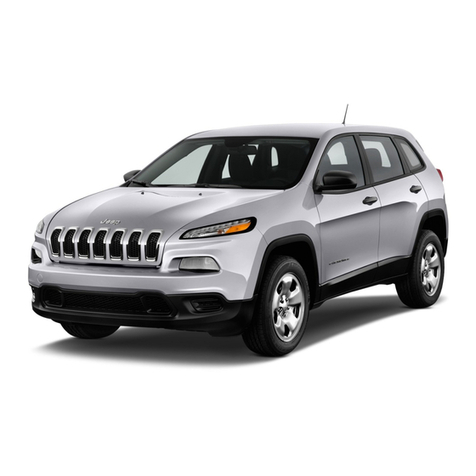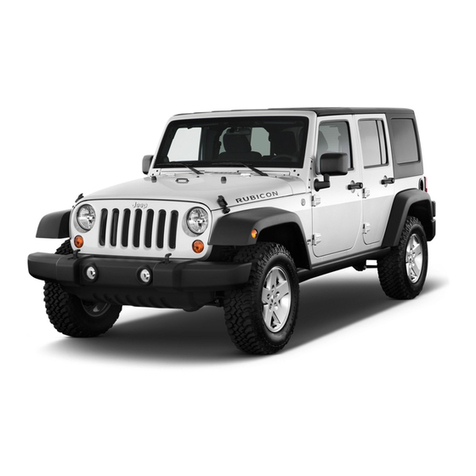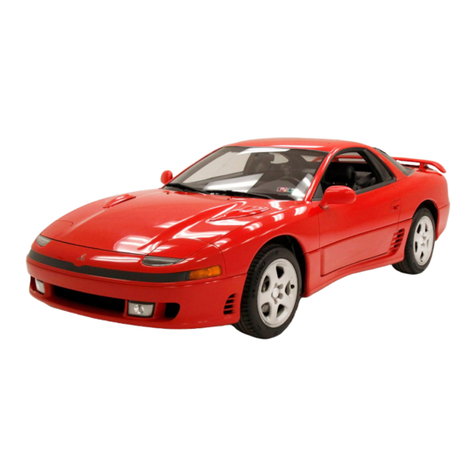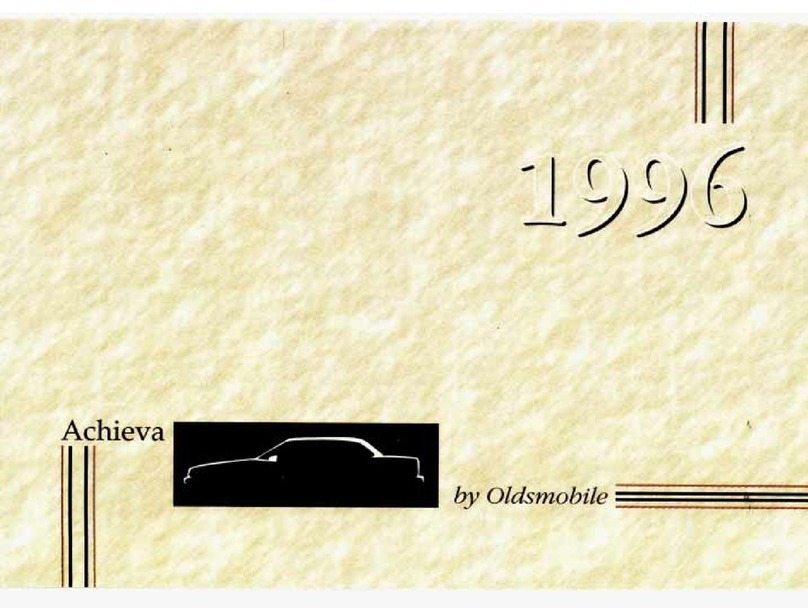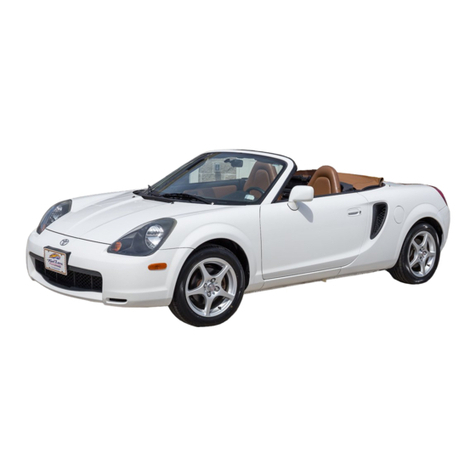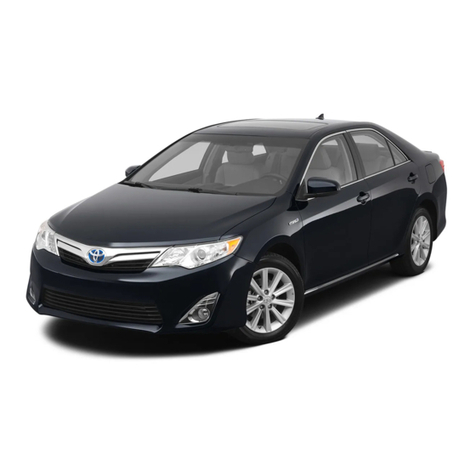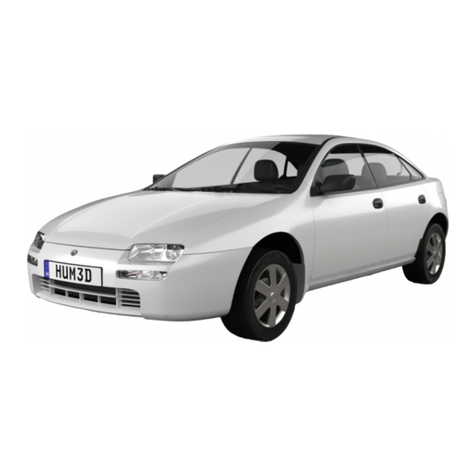
Maintenance techniques, tools and working facilities
0
-
13
for Grade
2
and Grade
3
fasteners. Higher grades can tolerate higher
torque values.
Fasteners laid out In a pattern, such as cylinder head bolts, oil pan
bolts, differential cover bolts, etc., must be loosened or tightened in
sequence to avo~dwarping the component. This sequence will nor
-
mally beshown in theappropriate Chapter. If a specific pattern is not
given, the following procedures can be used to prevent warping.
Initially, the bolts or nutsshould be assembled finger
-
tight only. Next,
they should be t~ghtenedone fullturn each, Ina criss
-
cross or diagonal
pattern. After eachonehas been tightened one full turn, return tothe
first one and tighten them all one
-
half turn, followmg the same pat
-
tern. Fmally, tighteneach of them one
-
quarter turnat a time untileach
fastener has been tightenedtothe proper torque. Toloosen and remove
the fasteners, the procedure would be reversed.
Component disassembly
Component disassembly should be done with care and purpose to
help ensure that the parts goback together properly. Alwayskeep track
of the sequence in which parts are removed. Make note of special
characteristics or marks on partsthat can be installed more than one
way, such as a grooved thrust washer on a shaft. It is a good idea
to lay thedisassembled parts out on a clean surface in the order that
they were removed. It may also be helpful tomake sketches or take
instant photos of components before removal.
Whenremoving fasteners froma component, keep track of their loca
-
tions. Sometimes threading abolt back inapart, orputtingthe washers
and nut back on a stud, can prevent mix
-
ups later. If nuts and bolts
cannot be returned totheir original locations, they should be kept in
a compartmentedbox or a series of small boxes. A cupcake or muffin
tin is ideal for this purpose, since each cavity can hold the bolts and
nuts froma particular area (i.e. oil pan bolts, valvecover bolts, engine
mountbolts, etc.).A pan of this type is especially helpful when work
-
ingon assemblies with very small parts, such as thecarburetor, alter
-
nator, valvetrainor interior dash and trim pieces. The cavities can be
marked with paint or tape to identify the contents.
Whenever wiring looms, harnesses or connectors are separated,
it
is a good idea toidentify thetwohalves withnumberedpieces of mask
-
ing tape so they can be easily reconnected.
Gasket sealing surfaces
Throughout any vehicle, gaskets are used to seal the mating sur
-
faces between two parts and keep lubricants, fluids, vacuum or
pressure contained in an assembly.
Many times these gaskets are coated with a liquid or paste
-
type
gasket sealing compoundbefore assembly. Age, heat and pressure can
sometimes cause the twoparts to stick together so tightly that they
are very difficult toseparate. Often, the assembly canbeloosened by
striking it witha soft
-
face hammer near themating surfaces.
A
regular
hammer canbe usedif a block of woodis placed betweenthehammer
andthepart. Do nothammer oncast parts or parts thatcould be easily
damaged. With any particularly stubborn part, always recheck tomake
sure that every fastener has been removed.
Avoid using a screwdriver or bar topry apart an assembly, as they
can easily mar the gasket sealing surfaces of the parts, which must
remain smooth. If prying is absolutely necessary, use an old broom
handle, but keep in mind that extra clean up will be necessary if the
wood splinters.
After the parts are separated, the old gasket must
be
carefully
scraped offand thegasketsurfaces cleaned. Stubborngasket material
canbe soaked with rust penetrant or treated witha special chemical
tosoften
it
so it canbeeasily scrapedoff. A scraper can be fashioned
from a piece of copper tubing by flattening and sharpening one end.
Copper isrecommended because
it
isusually softer thanthe surfaces
to be scraped, which reduces the chance of gouging the part. Some
gasketscanberemoved witha wirebrush, butregardlessof themethod
used, themating surfaces must be left clean and smooth. If for some
reason thegasket surface is gouged, then a gasket sealer thick enough
to fill scratches will have to be used during reassembly of the com
-
ponents. For most applications, a non
-
drying (orsemi
-
drying) gasket
sealer should be used.
Hose removal tips
Warning:
If
thevehicleis equippedwithair conditioning,do notdiscon
-
nectany of the
A/C
hoses without firsthaving thesystemdepressurized
by a dealer service department or an air conditioning specialist,
Hose removal precautions closely parallel gasket removal precau
-
tions. Avoid scratching or gouging the surface that the hose mates
against or theconnection may leak. Thisis especially true for radiator
hoses. Because of various chemical reactions, therubber inhoses can
bond itself to the metal spigot that the hose fits over. To remove a
hose, first loosen the hose clamps that secure it tothe spigot. Then,
with slip
-
joint pliers, grab the hose at rhe clamp and rotate
it
around
thespigot. Work it back and forth until itis completely free, thenpull
it
off. Silicone or other lubricants will ease removal if they can be
applied betweenthe hose andtheoutside of thespigot. Apply the same
lubricant to the inside of the hose and the outside of the spigot to
simplify installation.
As a last resort (and if the hose is to be replaced with a new one
anyway), therubber can be slit witha knife andthehose peeled from
the spigot. If this must be done, be careful that the metal connection
is not damaged.
If a hose clamp is broken or damaged, do not reuse
it.
Wire
-
type
clamps usually weaken with age, so
it
is a good idea toreplace them
with screw
-
type clamps whenever a hose is removed.
Tools
A selection of good toolsis a basic requirement for anyone whoplans
tomaintain and repair his or her own vehicle. For the owner who has
fewtools, the initial investment might seem high, but whencompared
to the spiraling costs of professional auto maintenance and repair,
it
is a wise one.
Micrometer set Dial indicator set
-










